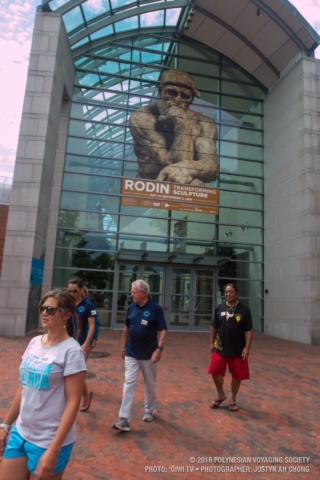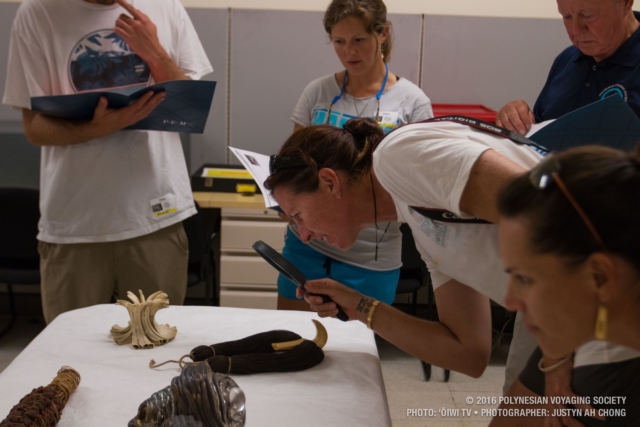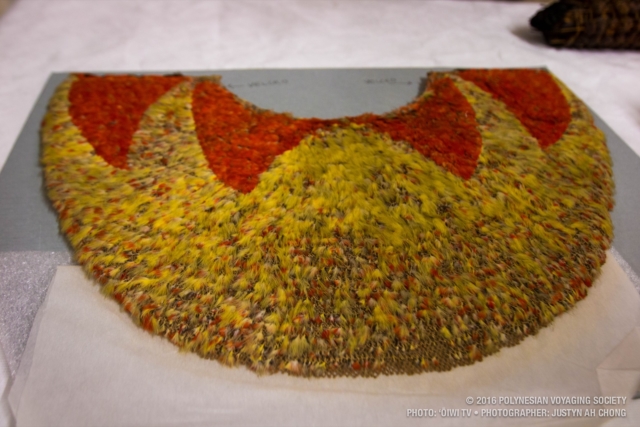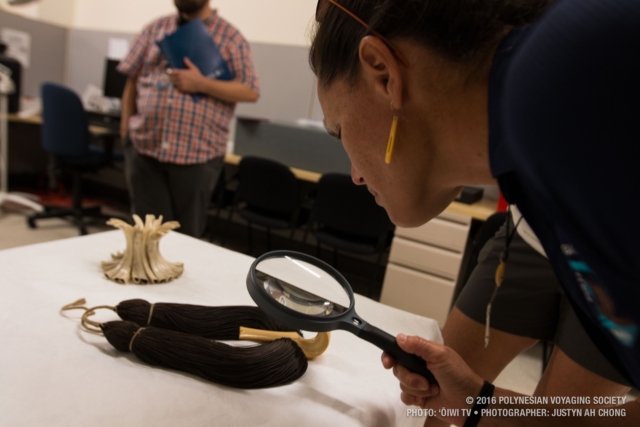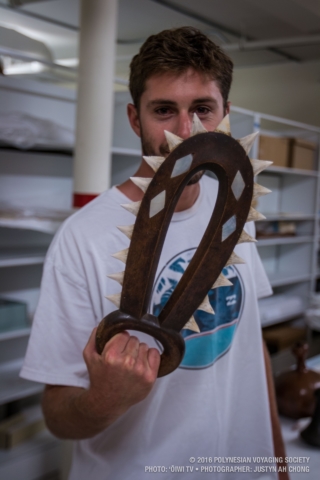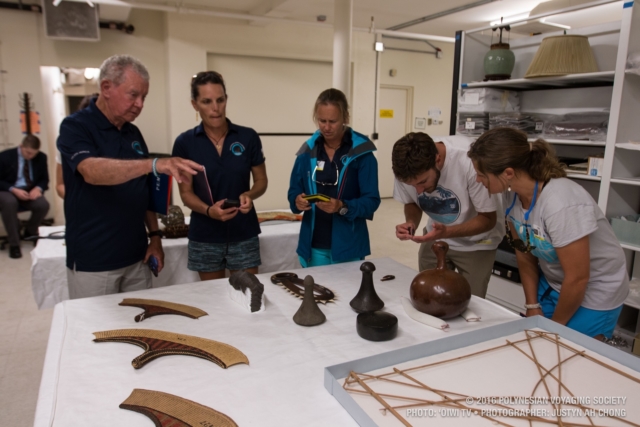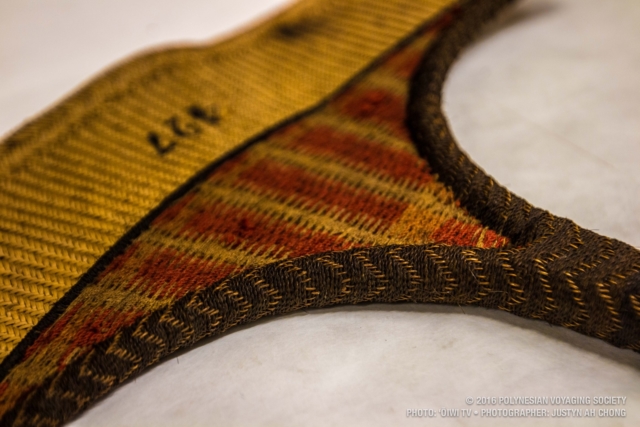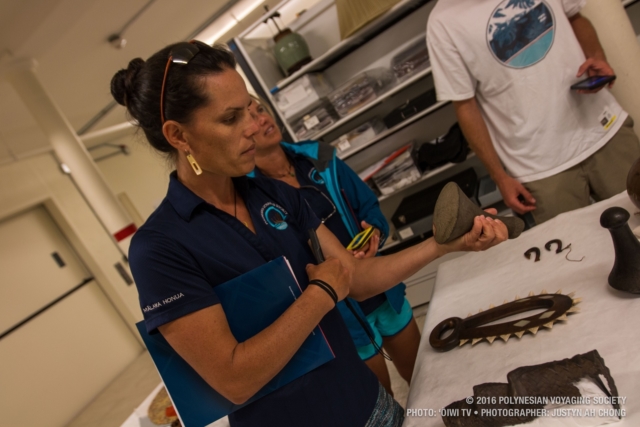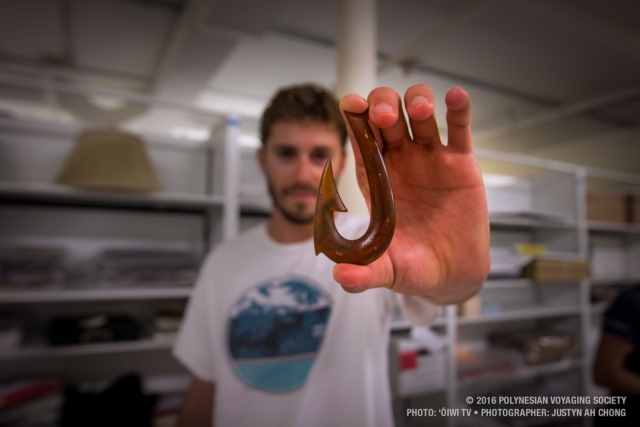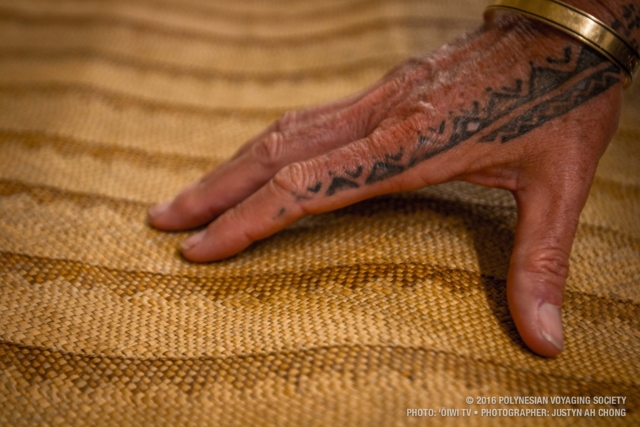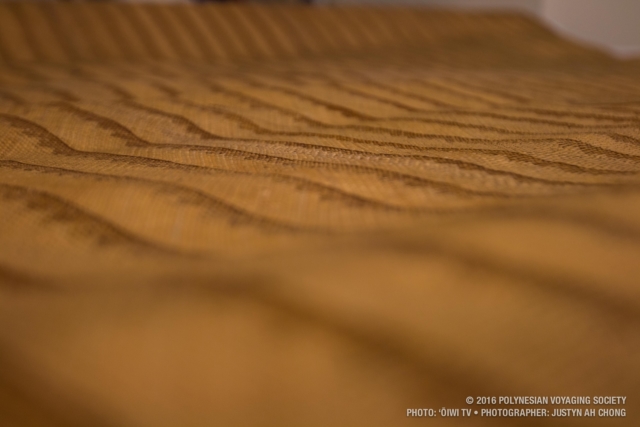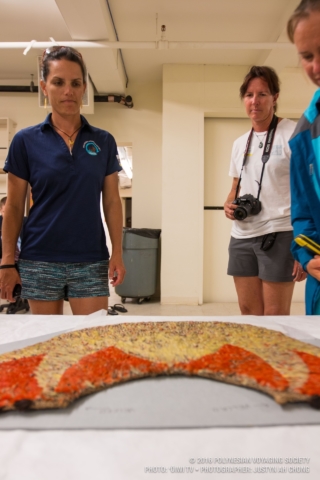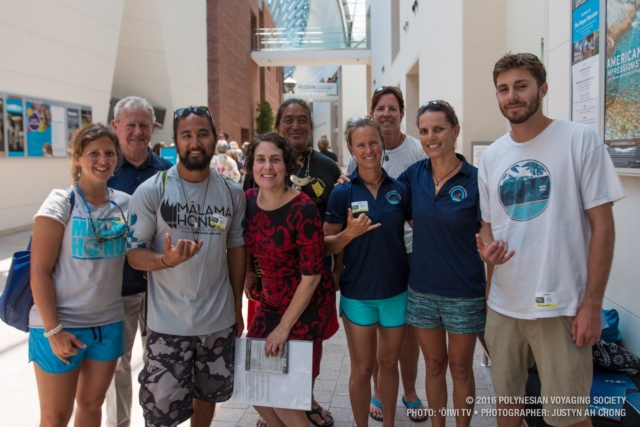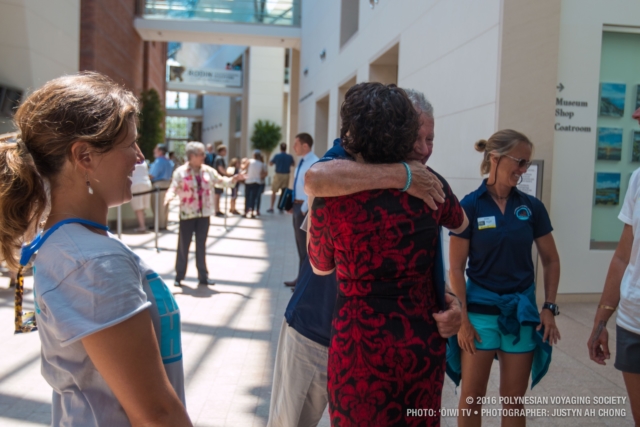
Crew Blog | Catherine Fuller: Touching the Past
- Posted on 18 Jul 2016
- In Crew Blogs, Cultural, Newsletter, Photo Galleries, Teachers
 Written by Catherine Fuller
Written by Catherine FullerMany believe that touch has the power to heal…but can it heal cultural wounds? On a visit to the Peabody Essex Museum in Salem, Massachusetts, we had the opportunity to test this idea. The giver of this gift, Karen Kramer, one of the curators, is a different breed of museum leader. For our visit to the museum, she brought out just a small sample of the large Polynesian collection housed in the museum, much of it not on public display. In most museums, items in these collections are displayed behind glass, or less frequently shared for closer inspection in private, secured rooms. The ability to see, but not touch, elements of one’s own culture perpetuates the viewpoint that the relevance of native cultures is “past”; cultural objects are removed from circulation and displayed for view by the general public. They are isolated from their context, taken from the hands that made them and exhibited for all eyes to see. Karen offered us a once in a lifetime gift: the choice to be able to handle objects that our kupuna were familiar and even intimate with. Her manaʻo is that the personal connection of people to objects helps to maintain them as a part of the living culture.

The crew takes a look at different Hawaiian artificats in the Peabody Essex collection.
We viewed two fans, two fishhooks, an ʻulu maika disk, a large makaloa mat, a lei niho palaoa, an ipu, two poi pounders, a shark-tooth weapon, a feather cape, a kukui nut torch and a boar-tusk anklet. Many of us were surprised by the fine braiding of the lei niho palaoa and the density of the basalt in the ʻulu maika stone. We marveled at the flexible softness of the makaloa mat and the razor sharpness of the shark’s teeth. We saw the heft of the lama kukui, and the silk of rare feathers. All of these objects were obviously beautifully made and lovingly cared for.

A crewmember observes the delicacy of an ʻahu ʻula. The crew was privileged to be able to actually experience the objects through touch.
For all of us, the first thought upon hearing Karen’s offer was not “can we touch these” but “should we?” Reverence for our culture is retained in the respect we give objects of stature, and so before we did anything, we formed a circle and said a pule of forgiveness and protection. Forgive us for leaving you in this place far from home. Forgive us for any offense in handling you. Accept our humble gratitude for the ability to see our kupuna in you and know them through you. Each of us, understanding the depths of antiquity cloaking these objects and the mana borne by them, approached each of these objects with wonder and profound respect. For some, the opportunity offered to us was too overwhelming. For others, the choice offered a moment to experience what our kupuna knew and to learn from it. What do we do? The choice was individual.

Kaʻiulani Murphy inspects the intricacies of a lei niho palaoa through a magnifying glass.
Ultimately, the value in visiting these objects, much less handling them, was simply being given time to visit them as cherished kupuna, not merely view them objectively as artifacts. Only when the past becomes real to those who live in the present, can we feel the presence of our forbears in the objects they held dear, and, likewise, only when we can sail a canoe around the world for hands to touch and feet to tread, do we continue weaving the story of a living culture.
Help fund the Voyage as we sail the East Coast
Hōkūle‘a’s visit to the eastern United States is a historic milestone in her 40 years of voyaging.
Celebrate with us by pledging your support to the Mālama Honua Worldwide Voyage.
